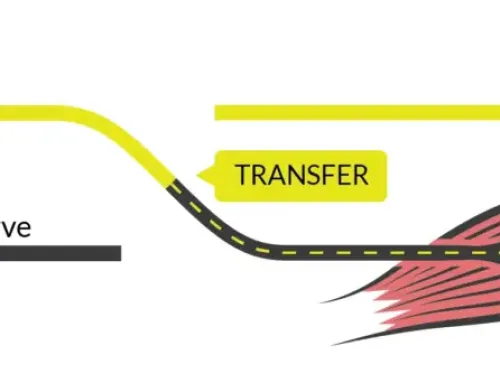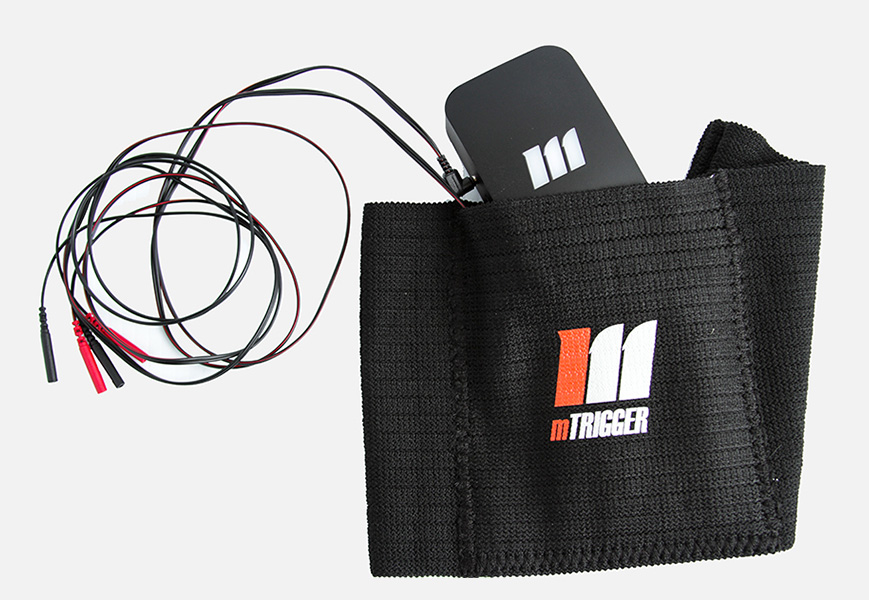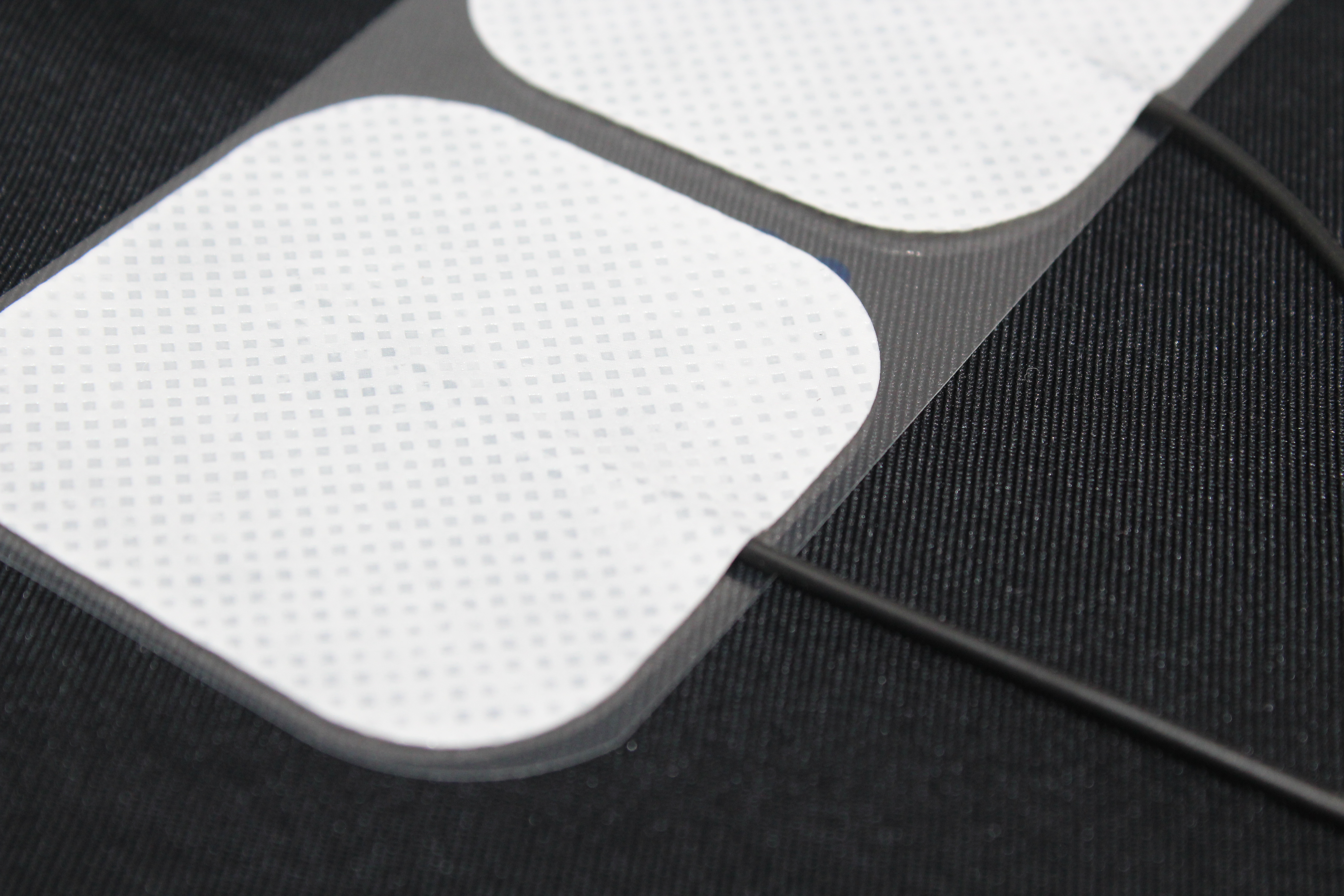Biofeedback is often seen as a staple tool in post-operative rehabilitation. However, the use of surface EMG biofeedback in non-operative situations is arguably just as important. In this blog, we are going to review and highlight several different opportunities to use mTrigger biofeedback during non-operative rehabilitation. Common orthopedic conditions that present to outpatient physical therapy clinics such as shoulder pain, knee osteoarthritis, and low back are a great place to start.
LOW BACK PAIN
Low back pain is the leading cause of disability and the top condition seen across most general orthopedic physical therapy practices. The use of sEMG biofeedback in this instance has two main objectives. First, to increase the patient’s awareness of the target muscle. Second, to help increase the control of the muscle – something that is critical when dealing with chronic pain or pain in general.[1] Following years of compensation or disuse due to back pain, patients almost always present with deficits in strength or a lack of muscle awareness.[1] Correcting these muscle imbalances is key to being able to move better and experience less pain.[1] Helping patients understand how a muscle works and what it feels like when a muscle is active not only results in strength improvements, but also a decrease fear avoidance of movement.[1] Improving activation of the glute med during, for example, a clamshell exercise (as seen below) can help improve low back pain and willingness to move after a back injury.
Positioning of the body and spine can play a huge rule in a muscle’s ability to activate.[2] Using mTrigger as a feedback tool during exercise, both the patient and the clinician can observe how position affects contraction ability, information that is not fully possible with palpation or visual observation alone.[1] In the case of low back pain, patients who exhibit a naturally more hyperlordodic (sway back) or hypolordodic posture often have a harder time recruiting their hamstring and glute muscles than those with a normal lordotic posture.[2] In a practical application of sEMG biofeedback, those with hyperlordosis (like the gymnast below) are better able to learn how to recruit their glute max muscle during prone hip extension through the use of abdominal hollowing (indwelling) to achieve a more ideal spinal position.[2]
KNEE PAIN
Knee pain is another very common issue seen in physical therapy clinics, with a large portion of those issues being non-operative. Previously we have focused on how mTrigger biofeedback can be used for operative knee rehab. However, a commonality between operative and non-operative knee issues such as knee osteoarthritis (OA), tendinopathies, or sprain/strains, is that they all typically exhibit a diagnosis of poor muscle activation, faulty movement patterns, and muscle weakness. This means that a in a lot of ways, the use of biofeedback for operative treatment can be applied to non-operative cases. Specifically, in one study, weakness in the vastus medialis obliquus (a quad muscle) was linked to pain and decreased function in patients exhibiting knee OA.[3] In this same study, the use of EMG biofeedback helped to reduce pain scores in patients with knee OA by working to improve muscle balance.[3] Isometrics have been shown across tendon research to hold an analgesic effect. Additionally, they are an easy way to help improve maximal voluntary contraction of a weak quad muscle.[4] The visual feedback mTrigger sEMG biofeedback provides – for example during an isometric exercise for tendon problems or knee OA – enhances a patient’s active participation and understanding when it comes to transforming a muscle contraction into an activity. [4]Right away, this creates a light bulb moment that helps to increase motivation and compliance with an exercise program.[4] To break it down practically, using sEMG biofeedback during the following exercises for knee pain – isometric quad set, terminal knee extension (TKE), straight leg raise (SLR), and isometric hip abduction – has shown to be effective at improving quad strength and neural adaptations after 5 weeks in males and females.[5]
SHOULDER PAIN
Finally, the shoulder. There are seventeen different muscles that attach to the scapula (shoulder blade), helping the shoulder to function as an intricate balance between stability and mobility. Not surprisingly, shoulder pain is often associated with an imbalance in scapular muscle activity.[6] To give an example, when raising the arm overhead, the lower trap, upper trap, and serratus anterior must work together to create scapular posterior tilt, external rotation, and upward rotation.[6] If these motions are even slightly off or out of sync, they can easily lead to subacromial impingement.[6,7] Luckily, research has shown that feedback is effective at helping to improve scapular timing and control.[6] With shoulder elevation specifically, biofeedback helps to increase the activity of the lower trap and decrease activity of the upper trap, ultimately allowing for a smoother and more ideal motion for reaching overhead without pain.[6]
*In this video example, a dual channel set up on the upper and lower traps is being utilized. This type of set up allows for down training of over active muscles and reduces compensation patterns. Read more on that here.
Even cooler, studies have shown that after just one session of biofeedback, overhead athletes have a better understanding of their activation and exhibit better movement patterns.[6] Now this is by no means saying to use biofeedback once then scrap it! Rather, it indicates that biofeedback can be a highly effective, low cost, easy to use tool to improve coordinated muscle actions that are essential for healthy movement.[7]
Don’t forget about other uses for mTrigger biofeedback including: Ankle Sprains, Hamstrings Strains, and Adductor Sprains.
SUMMARY
mTrigger surface EMG biofeedback is in essential tool for non-operative rehabilitation. Common conditions such as low back pain, knee pain, and shoulder pain all exhibit common underlying diagnoses that can be addressed with sEMG biofeedback. From a lack of muscle activation, to poor muscle timing, to incorrect movement patterns, mTrigger offers a way to increase awareness, build confidence and strength, and create lasting change throughout the rehabilitation process.
How to know if biofeedback is the right tool
|
Sign up for our email list
|
References
[1] Neblett R. Surface Electromyographic (SEMG) Biofeedback for Chronic Low Back Pain. Healthcare [Internet]. 2016 [cited 2022 Nov 7];4. Available from: /pmc/articles/PMC4934580/.
[2] Kim TW, Kim YW. Effects of abdominal drawing-in during prone hip extension on the muscle activities of the hamstring, gluteus maximus, and lumbar erector spinae in subjects with lumbar hyperlordosis. J Phys Ther Sci [Internet]. 2015 [cited 2021 Nov 24];27:383–386. Available from: https://pubmed.ncbi.nlm.nih.gov/25729173/.
[3] Raeissadat SA, Rayegani SM, Sedighipour L, et al. The efficacy of electromyographic biofeedback on pain, function, and maximal thickness of vastus medialis oblique muscle in patients with knee osteoarthritis: a randomized clinical trial. J Pain Res [Internet]. 2018 [cited 2022 Dec 12];11:2781. Available from: /pmc/articles/PMC6235326/.
[4] Levitt R, Deisinger JA, Remondet Wall J, Ford L CJ. EMG feedback-assisted postoperative rehabilitation of minor arthroscopic knee surgeries. J Sports Med Phys Fitness [Internet]. 1995;35:218–223. Available from: https://pubmed.ncbi.nlm.nih.gov/8775650/.
[5] Anwer S, Equebal A, Nezamuddin M, et al. Effect of gender on strength gains after isometric exercise coupled with electromyographic biofeedback in knee osteoarthritis: a preliminary study. Ann Phys Rehabil Med [Internet]. 2013 [cited 2022 Nov 7];56:434–442. Available from: https://pubmed.ncbi.nlm.nih.gov/23831299/.
[6] Du WY, Huang TS, Chiu YC, et al. Single-Session Video and Electromyography Feedback in Overhead Athletes With Scapular Dyskinesis and Impingement Syndrome. J Athl Train [Internet]. 2020 [cited 2022 Nov 7];55:265–273. Available from: https://pubmed.ncbi.nlm.nih.gov/31876455/.
[7] Weon JH, Kwon OY, Cynn HS, et al. Real-time visual feedback can be used to activate scapular upward rotators in people with scapular winging: an experimental study. J Physiother. 2011;57:101–107.








Leave A Comment